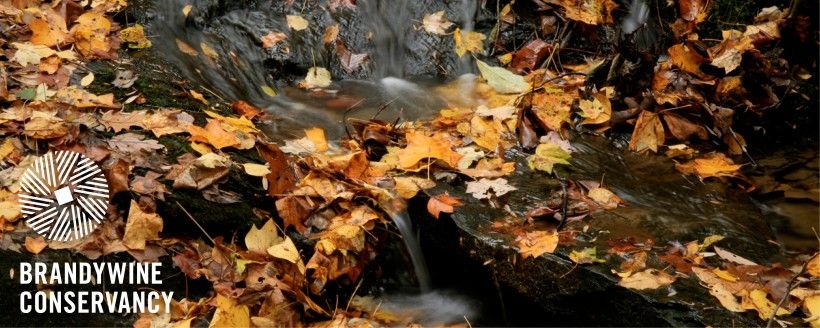
Director's Report
Dear fellow conservationists,
This edition of Environmental Currents is replete with wonderful articles of regional significance to help you stay informed of timely issues, updates on our progress in the Laurels Preserve and Penguin Court, and ways that we can work together to realize better stewardship on your own lands.
We’ve also included some fun ways to support the Conservancy in the community, from Bike the Brandywine to the new Laurels Education Center (part of our Laurels Fundraising Campaign) to a really cool challenge at Trail Creek Outfitters—where we truly hope you vote for Brandywine Conservancy!
One bit of news that I’d like to convey is that, in recognition of meeting national quality standards for protecting important natural areas and working lands forever, The Land Trust Accreditation Commission has awarded renewal of accreditation to the Brandywine Conservancy & Museum of Art through July 31, 2024. The Brandywine Conservancy was one of the first Accredited Land Trusts in America and this renewal is truly an honor and validation of the great work we’ve consistently achieved in our 52 years as a land trust.
As I’ve said time and again, without you and your support, we simply cannot continue to do what we do in the protection of the land and waters of our beautiful region.
With my sincerest gratitude,
Ellen
Ellen M. Ferretti
Director, Brandywine Conservancy
Winter Scenes and Cleaner Streams
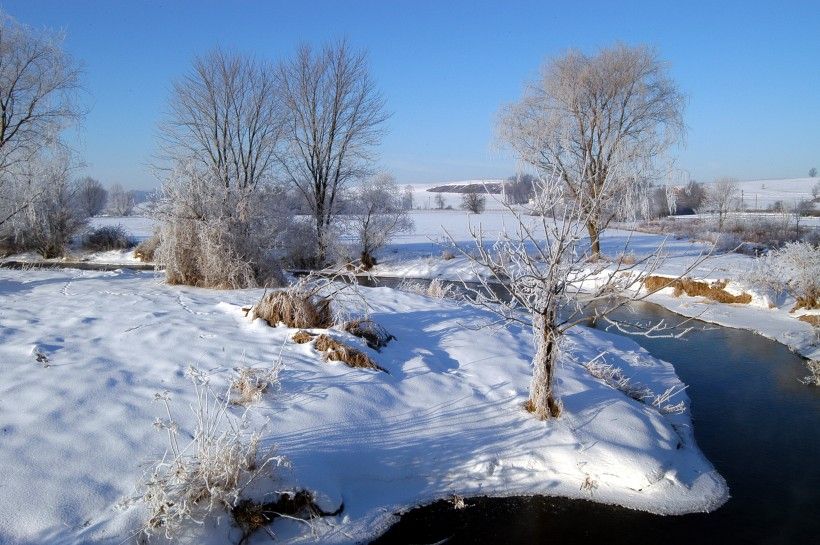
As we prepare for the winter months ahead, learn about some of the challenges associated with keeping icy roads safe and waterways clean with this special guest article by Jan Bowers, P.G., Chester County's new Director of Facilities, and former Executive Director of Chester County Water Resources Authority (CCWRA). As part of a cooperative program with the County and CCWRA, the U.S. Geological Survey (USGS) has been collecting water quality data in streams and groundwater since 1970. Throughout the years, monitoring has shown increased chloride levels over time due to a "runoff cocktail" of road and pavement deicers, wastewater treatments, fertilizers and animal manure. Read about how these increased chloride levels impact our waterways, as well as actions you can take to reduce your salt footprint at home.
Click here to read more.
Trail Creek Challenge
Double your “App-etite” for the outdoors with the expanded Brandywine Creek Greenway App
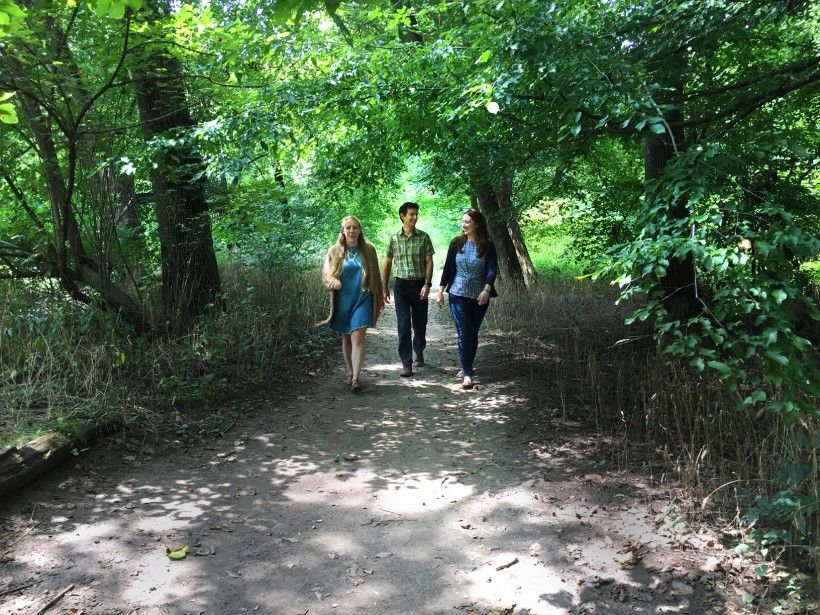
Trail Creek Outfitters is currently celebrating its “Brands that Give Back Month,” supporting projects at the Brandywine Conservancy, The Land Conservancy of Southern Chester County and Brandywine Red Clay Alliance. Throughout the month of September, customers to both Trail Creek locations (Glen Mills and Kennett Square) will have the opportunity to cast a "vote" for their favorite project to support with each purchase made at either location. While each organization will receive a donation at the end of the month, the amount each will receive is decided by Trail Creek customers. We hope you will consider voting for the Brandywine Conservancy and its Brandywine Creek Greenway App project during your next Trail Creek visit! Based on the number of votes each organization receives, Trail Creek will award contributions on a weekly basis. Last year, the Brandywine swept the competition and we won all four weeks—we need your help to do it again!
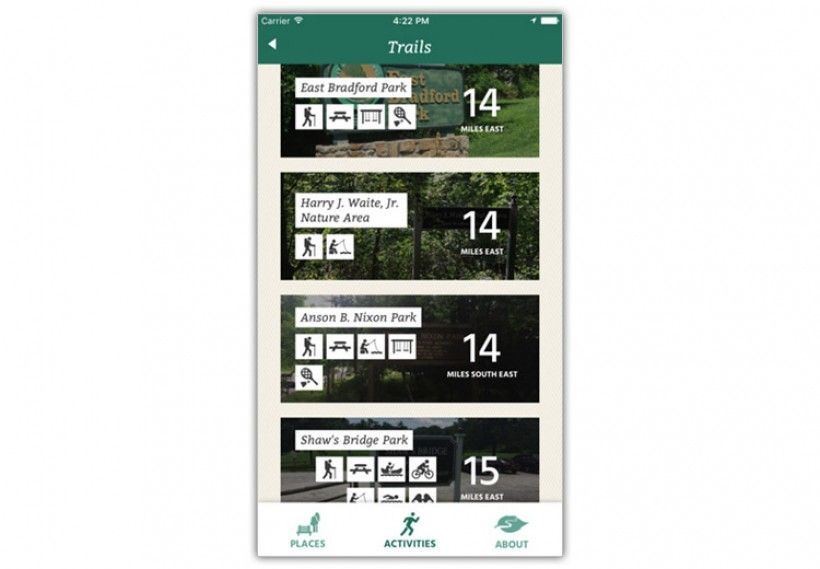
The Brandywine Creek Greenway mobile app is FREE to download and is used to explore over 100 parks and preserves open to the public currently serving Chester County, PA. Your vote will enable the Brandywine Conservancy to expand the app to add over 100 parks and preserves in New Castle County and the City of Wilmington in Delaware.
The app is GPS-enabled and displays a list of the closest parks and preserves to the user’s current location. Select a desired activity (biking, birding, boating, equestrian, fishing, picnic, playground, sports, swimming, trails) and the app will guide you to a list of destinations accordingly. Each entry contains a brief description of the park or preserve, pictures, directions and information such as hours of operation.
Upcoming Calendar of Events
Wednesday Waddle at Penguin Court: In Search of Amphibians and Reptiles
Wednesday, September 11
Fern ID Walk in the Laurels Preserve
Saturday, September 14
Fall Garden Walk
Wednesday, September 18
Wednesday Workshop at Penguin Court: Leaf Casting
Wednesday, September 25
Bike the Brandywine
Saturday, September 28
Wednesday Waddle: A Sunset, Autumn Tour of Penguin Court
Wednesday, October 2
Late-season Wildflower Walk
Saturday, October 5
A Walk in Penn's Woods
Sunday, October 6
9th Annual All Partners Meeting for Brandywine Creek Greenway and MAP Subscribers
Thursday, October 17
Tree Planting
Saturday, October 19
Laurels Preserve Trails Loop Hike
Sunday, October 20
Palette to Palate
Saturday, October 26
Hike-a-Loop Trail
Sunday, November 10
Winter Resident Birds
Saturday, November 16
Winter Tree I.D. Walk
Saturday, November 23
Register Today and Join Us!
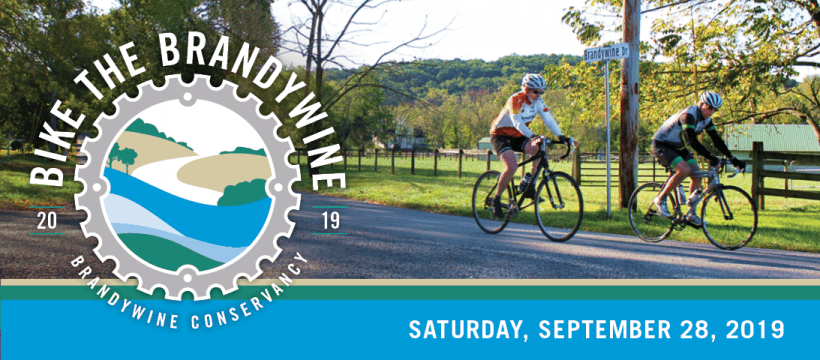
Bike the Brandywine will be held on Saturday, September 28, 2019. Riders can choose from distances of 25-, 45-, 62- (Metric Century) and 80-mile routes through the majestic Brandywine Creek Greenway and surrounding area. The ride begins and ends along the banks of the Brandywine River and participation supports the open space and clean water initiatives of the Brandywine Conservancy. Register Today!
Greenway Expansion into Delaware
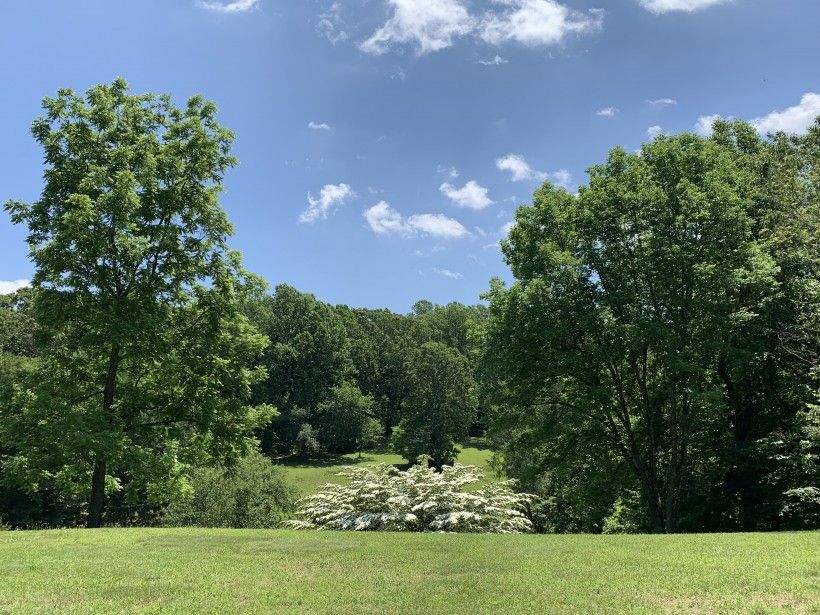
The most recent phase of the Brandywine Creek Greenway—a regional planning initiative of the Brandywine Conservancy to create a 40-mile-long conservation and recreation corridor along both branches of the Brandywine—has entered the planning stage of expanding into the State of Delaware.
The Brandywine Conservancy and Delaware Greenways have partnered together with several organizations to develop a draft concept of the Greenway expansion into Delaware. Based on input from partners, public outreach and analysis of the unique natural, historic and recreational amenities found in New Castle County and the City of Wilmington, the draft concept of the Greenway expansion highlights:
-
The major conservation corridor, centered on Brandywine River and the surrounding lands
-
Three minor corridors for conservation and recreation
-
Hubs of activity within the major corridor and outside it
-
Major destinations in the region such as museums, parks and historical sites
-
Areas to access water, both existing and conceptual
-
Connections between all those important places, via existing and conceptual land links and bicycle routes.
Partners collaborating with the Brandywine and Delaware Greenways on this effort include New Castle County, the City of Wilmington, WILMAPCO, DelDOT, DNREC, the Delaware Division of Historic and Cultural Affairs, the Conservation Fund, Delaware Nature Society, the Nature Conservancy of Delaware, and others. This collaboration across state lines continues the exceptional legacy of partner organizations protecting and enhancing the unique natural and historic resources in the Brandywine Valley, while improving access to opportunities for recreation amenities, such as trails for hiking, biking or horseback riding.
Want to learn more about this project? Click here to access the project page.
Interested in staying looped in on the project, including additional opportunities to provide input this fall? Send your email address to the Brandywine’s Kathleen McCaig to get signed up for notifications.
Warmer and wetter weather prompts greater municipal interest in resiliency planning
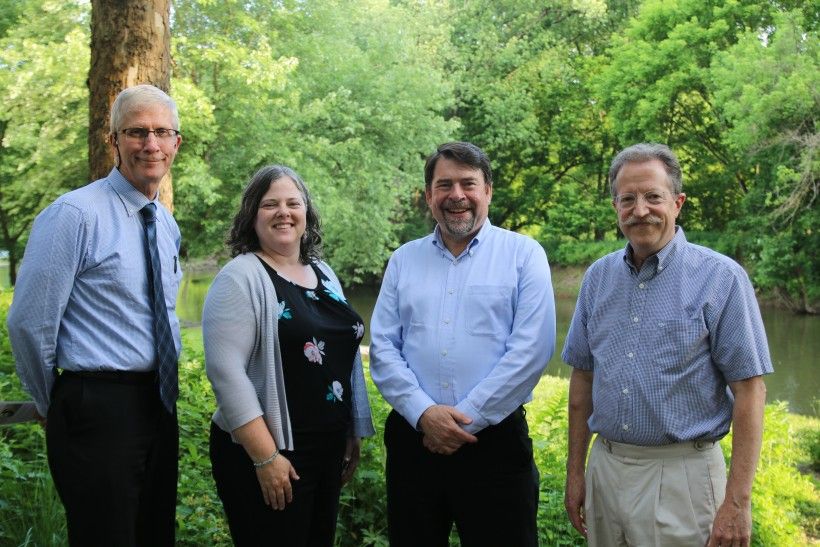
Increasingly, our region’s municipal officials and others are facing extreme weather events and other environmental changes that are challenging the delivery of basic local government services. The Brandywine Conservancy’s Municipal Assistance Subscriber Program is working to help address these challenges by offering resources and expertise with municipal sustainability planning, climate adaptation planning and plan implementation.
During its June 2019 Subscriber meeting, the Brandywine Conservancy presented an engaging lecture offering technical input and practical solutions to address some of the environmental challenges municipalities are facing. The featured speakers included Robert Graff, Manager of the Delaware Valley Regional Planning Commission’s (DVRPC) Office of Energy and Climate Change Initiatives; Daniel Zimmerman, Manager of Warwick Township, Lancaster County; and Susan Elks, Director of Community Planning for the Chester County Planning Commission. Topics discussed included climate adaptation and mitigation basics; regional climate adaptation trends; successful sustainability planning and implementation at township and regional levels; and the Sustainable Pennsylvania Community Certification program.
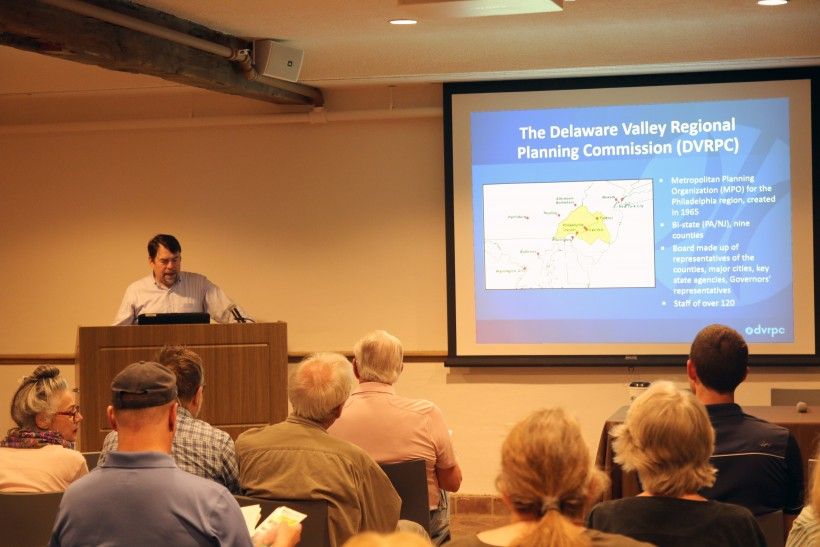
Robert Graff shared DVRPC’s resources for municipalities, including their “Municipal Management in a Changing Climate” publication, and offered information about Regional Energy Use and DVRPC’s Greenhouse Gas (GHG) Emissions Inventory. Warwick Manager Dan Zimmerman shared how completing the Brandywine Conservancy’s model “Sustainable Community Assessment,” followed by implementing new sustainable policies, spurred improved management of this rural/suburban Lancaster County township’s environmental resources and stormwater. Warwick has received the first Platinum Sustainable Pennsylvania Certification in the Commonwealth. Chester County’s Susan Elks highlighted the sustainability-oriented components of her County Commissioners’ recently adopted Landscapes3 Comprehensive Plan. Susan also indicated that sustainability planning and implementation projects proposed by Chester County municipalities under Landscapes3 would be eligible for Vision Partnership Program funding under the category of Environmental and Community Sustainability/Resilience Plan/Study (to include energy conservation).
What was abundantly clear from participants at the June Subscribers Meeting was a strong local interest in better preparing their municipalities, residents and businesses for a changing climate. They were also wanting to find ways to become more environmentally sustainable, and where to obtain helpful expertise, tools and funding sources.
Brandywine Conservancy’s Municipal Assistance Program (MAP) staff can offer an array of tools and expertise for this region’s municipalities to use for sustainability and resiliency planning and implementation. The Conservancy’s model “Sustainable Communities Assessment” has now been utilized by several Chester and Lancaster County municipalities. “Through use of our assessment, many municipalities are surprised to learn that they have already been using tools and practices that further their sustainability and/or climate adaptation goals and are often eager to do more,” notes the Brandywine’s John Theilacker, Associate Director for Municipal Assistance. MAP program staff can work with any interested municipality to help evaluate their planning and regulatory tools and practices in the areas of environmental sustainability and adaptation/mitigation, which can help better prepare for what is already a changing future.
Interested in planning and conservation assistance? Contact John Theilacker, AICP, Associate Director for Municipal Assistance.
Stewardship Planning for Your Property
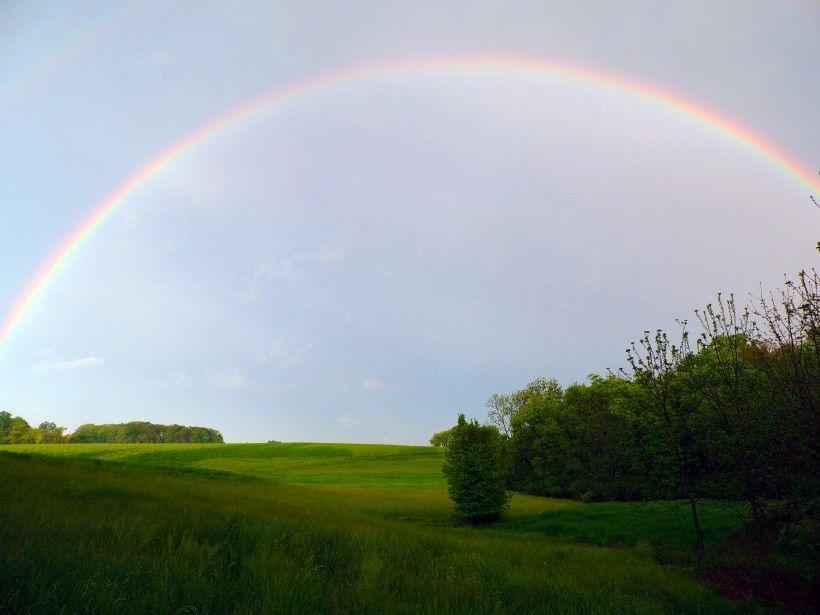
The Brandywine Conservancy’s Land Stewardship team loves to get questions from property owners about how to care for natural areas, such as: How can I control invasive plants? How do I attract pollinators? How do I keep my woods healthy?
These are all goals that can be addressed more effectively if you have a stewardship plan for your property. A stewardship plan sets out the conservation goals for your property and identifies what to do to achieve those goals. The plan is simple in concept. It can be more complex, depending on how many different types of natural areas you want to plan for.
For example, rather than trying to eliminate all invasive plants on your property, which could well exhaust you and your resources, you might identify a priority goal to expand stopover habitat for migrating songbirds in your woods. You assess that the woods have a disappearing but still vital community of native berry-bearing shrubs that are being eaten by deer and displaced by invasive barberry. So you could focus on controlling invasive plants in that area and planting native shrubs while fencing out deer. Your plan enables you to be more focused, achieving success in managing your natural areas to attain conservation goals.
A stewardship plan can be broken down into a few steps.
Step 1: Identify current conditions on your property.
-
Make a sketch map of habitats (woods, stream, meadows, wetlands) and buildings, lawns, driveways, etc.
-
How does your property relate to the larger landscape? Are there nearby natural areas? Is there a shopping center parking lot next door? Do your neighbors fence out deer that all come on to your property?
-
Be sure to include topography and water features (streams, ponds).
-
It is a good idea to know the soil types on your property, at least in a general sense: how fast or slow it drains, whether it’s thin and poor or deep and loamy.
-
The history of your property is also relevant, especially if it was ever a farm, because of the long-term effects of soil disturbance.
-
Assess the overall condition of each habitat. Are older trees shading out what used to be a sunny meadow? Are the woods bare of understory? Are the meadows full of invasive thistle and crown vetch? Are geese the only birds visiting your pond?
Step 2: Identify your conservation goals for each habitat. These are your goals, and should reflect what you value about nature on your property.
-
Your goals can be broad or narrow. Do you want to establish a meadow? Encourage birds to nest in your woods? Grow your own wild edibles? Attract dragonflies to your pond?
-
If you have broad goals you can also use this opportunity to drill down. Why a meadow? Do you want to see butterflies? Or do you just love the sight of waving grass?
-
If your goals are more functional, that’s fine too. You may have a goal of reducing erosion of a streambank, for example.
-
Remember: It’s OK to have a goal that is to keep things “the same as is,” only better. In fact, this is a pretty common goal. This goal is often reflective of what attracted you to the property in the first place.
-
Prioritize what’s most important to you.
Step 3: Identify what has to be done to get to your goals from the current conditions (stewardship strategies).
-
This is where you may benefit from some expert technical help. There are contractors/consultants who can provide expertise. There is plenty of online information, but it can be hard to sift through. You want to make sure you are using resources that are applicable to our region, because geographical differences such as climate and rainfall patterns can affect the success of your plan. The Brandywine Conservancy’s website has some resources for planning.
Step 4: Identify specific, achievable steps that will accomplish your strategy (stewardship tasks).
-
Taking small steps that you can achieve makes you feel good about your plan, inspiring you to keep going. Build success on success.
Step 5: Observe, Record, Revise and Review
-
Watch what happens. Makes notes about what’s working, what isn’t and what surprises you. Revise your maps of current conditions (keep each version so you have a history). Regularly review your plan and modify it as appropriate to accommodate changing conditions, add new goals, or change things that aren’t working well.
Additional Resources:
An excellent framework for stewardship planning for natural areas is available from Natural Lands, one of our regional partners in land conservation. This article is based on the same step-by-step process, condensing some of the steps into a smaller number for purposes of readability. You can download the full book here. The guide may appear intimidating in its length, but it can be tailored to any size property or scale of plan.
Finally, note the standard caveat that if your property is covered by a conservation easement, there may be restrictions on what you can do. Easement stewardship staff are always happy to answer questions about your easement.
New Passive Environmental Education Center at the Laurels Preserve
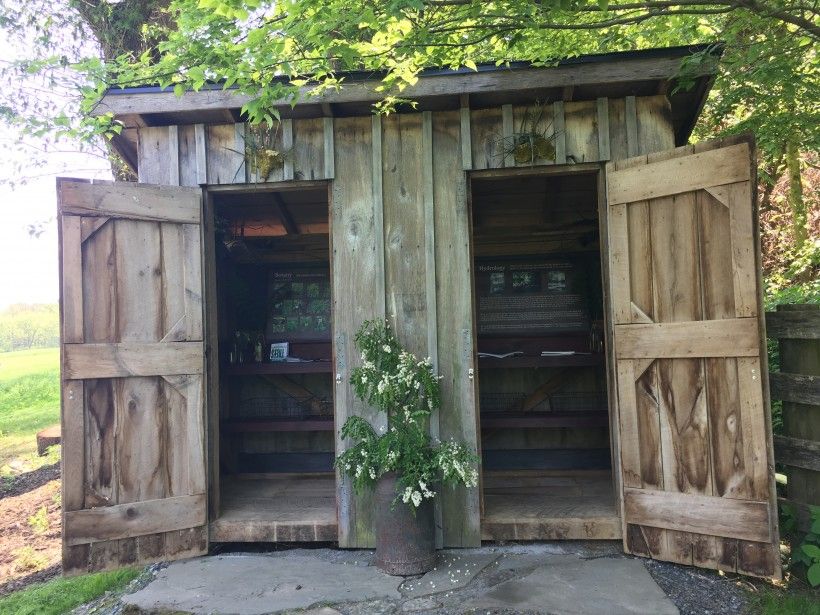
Brandywine members visiting the Laurels Preserve have something new to explore thanks to a recent renovation project. Of the three structures in the Laurels Preserve—including two covered bridges—an old, two-seater outhouse on the property had been vacated for more than 15 years. Thanks to support from the Laurels Committee and the Buck and Doe Trust, the outhouse was recently converted into a passive environmental education station.
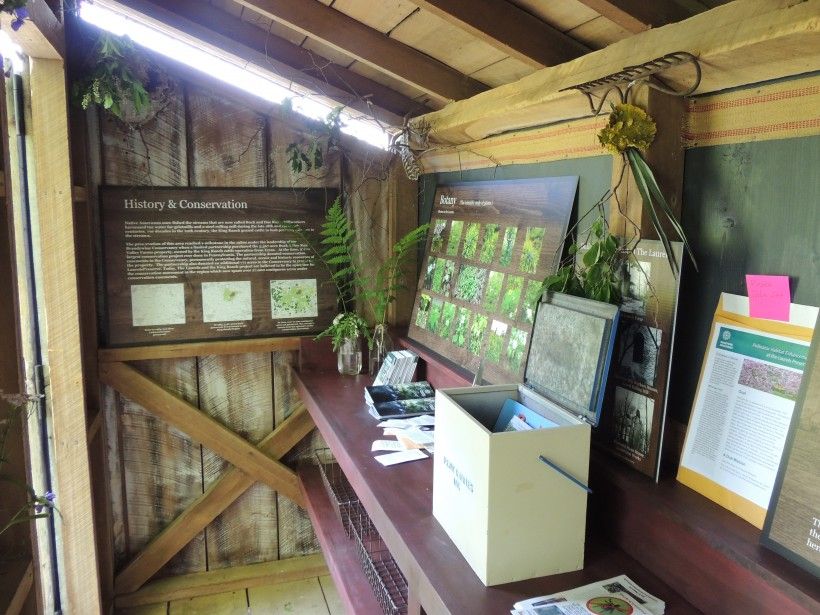
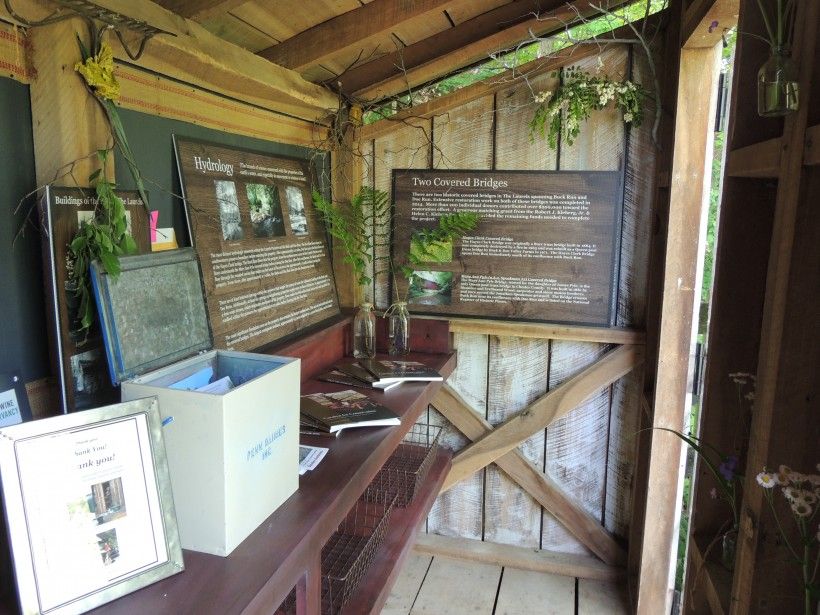
Members of the Buck and Doe Trust rolled up their sleeves and solicited Conrad Somers for the carpentry and Michel Harris for the interior and exterior beautification. Brandywine staff graded the exterior of the building and planted a rain garden beside the structure. Amy Mckenna—President of the Buck and Doe Trust—provided the interior content posters, which include information on the history of the Laurels Preserve, as well as its flora and fauna. In addition to learning more about the Laurels and its ecology, visitors to the passive environmental learning station can leave comments or a thought of the day on provided whiteboards.
While this was a modest, home-grown project, everyone involved enjoyed the process and helped create a great new addition for visitors to the Laurels Preserve.
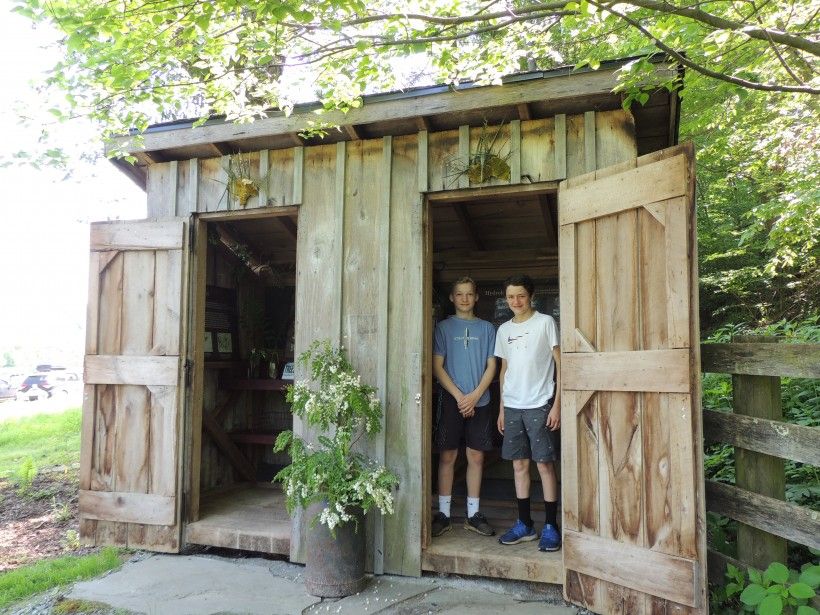
Two days of service and fun at the Laurels Preserve
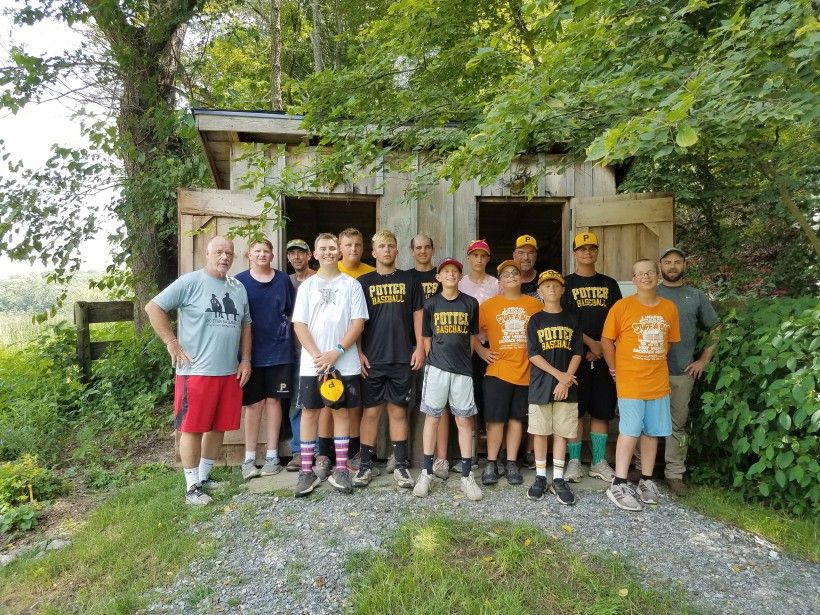
The Brandywine Conservancy’s Laurels Preserve recently benefited from a service project by the Potter Baseball touring team. Each summer since 2010, the team travels the mid-Atlantic region and beyond with about 20–25 players, aged 13–17, playing a mix of both organized and pick-up baseball games, as well as running skills clinics for younger players. The touring players are also expected to embody the principles summarized in the four tenets of Potter Baseball: Passion, Hard Work, Respect and Selflessness. The team shows their commitment to these values by doing service projects in the communities where they visit.
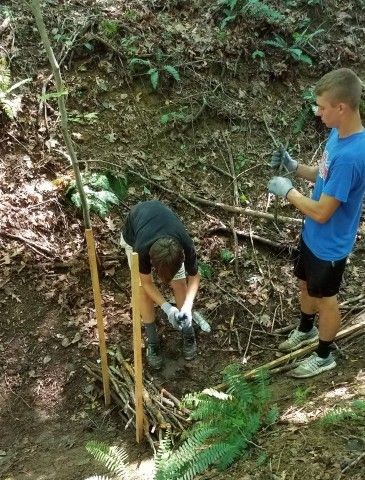
Bringing much enthusiasm and dedication, the team visited the Laurels Preserve this summer to lend a hand with maintaining some of the Preserve’s extensive network of trails. After a brief introduction to the Laurels and the work of the Brandywine Conservancy, the team got to work. On two of the hottest days of summer, the youths organized themselves by the various tasks they were shown by preserve manager, Grant Folin, and preserve steward, Caleb Meredith. They pounded stakes, raked leaves, collected and sized twigs, made structures with the twigs and tied the material down with twine, all the while maintaining a cheerful and helpful attitude with Conservancy staff, their chaperones and one another.
The team also assisted with putting together a series of debris dams, situated in gullies, which empty out onto some of the trails. After several intensely heavy rainstorms during the beginning of the summer, a few of the trails on the Preserve developed deeply gouged ruts as a result of large volumes of water traveling at high velocity down the gullies. Thanks to the team’s efforts, the new debris dams will slow the velocity of the rainwater in the gullies and spare the trails below from such drastic damage in future.
Once the work was complete, the team took lunch in the shade near the new passive environmental education station—the former Laurels outhouse—and then visited the newly installed pollinator habitat enhancement planting along Doe Run in the meadow next to the riparian buffer tree planting.
The Potter Baseball touring team’s efforts at the Laurels Preserve will benefit the Brandywine’s visiting members and staff well into the future. They demonstrated the diligence, enthusiasm and esteem for self and others outlined in the tenets of Potter Baseball. Hopefully, the peace, beauty and environmental importance of the Laurels Preserve will remain with the team for many years to come.
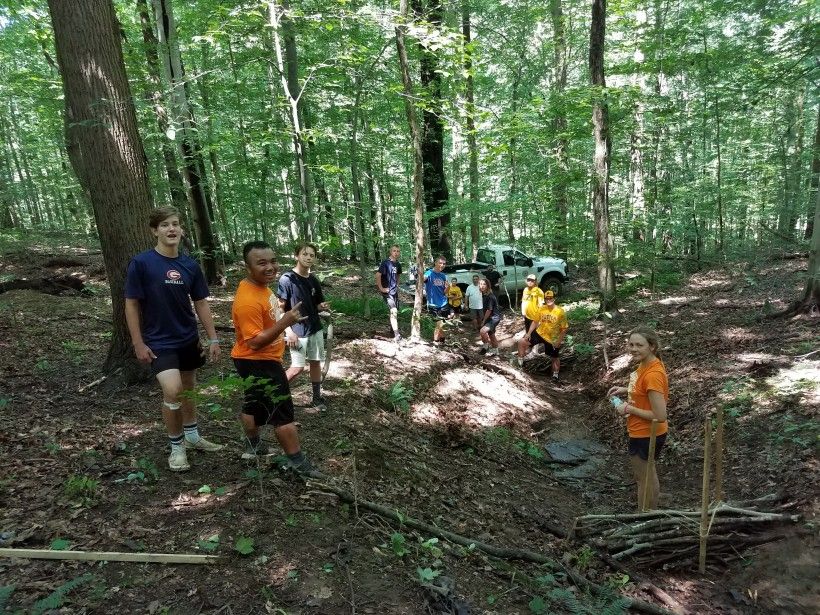
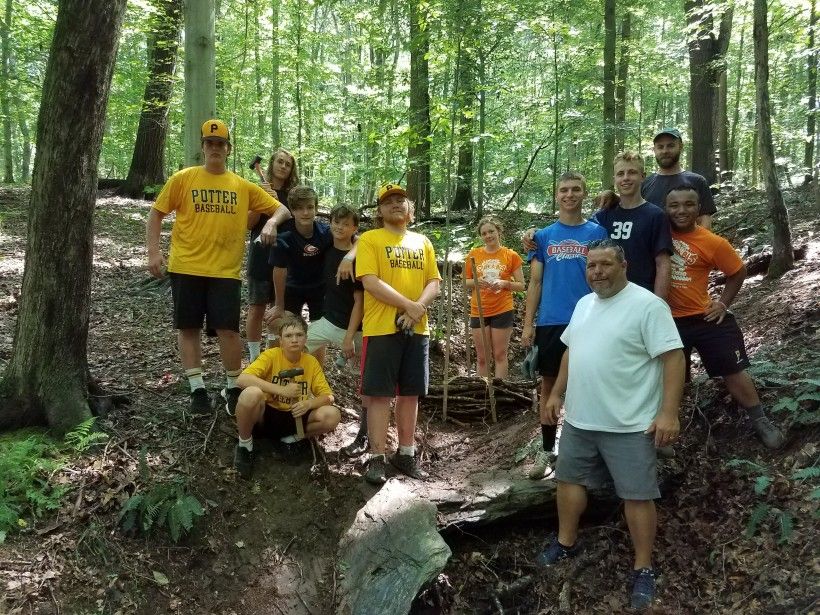
Monarchs, Milkweeds and More
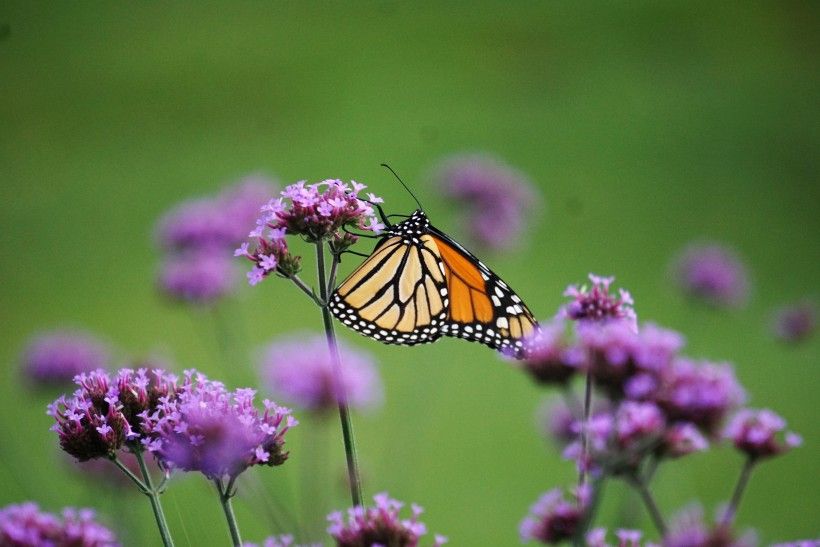
The Brandywine Conservancy’s Penguin Court and the Southern Alleghenies Museum of Art (SAMA) recently hosted a “Monarchs, Milkweed and More” program at SAMA’s Ligonier location. The event’s purpose was to educate children and adults about the beloved monarch butterfly, as well as the importance of milkweed to monarchs and other insects.
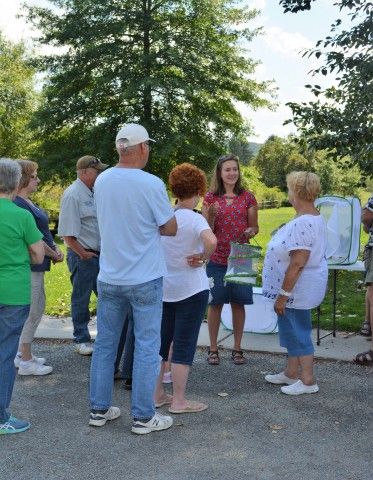
Melissa Reckner, Penguin Court’s Program Manager, and Jean Keene, Keystone State Park’s Environmental Education Specialist, greeted participants and shared information about monarchs in their various stages. Live monarch eggs, caterpillars, chrysalises and butterflies prompted wonderful questions and conversations about these beautiful insects, and children helped release several into SAMA’s magnificent gardens.
Penn State Master Gardener, Patti Schildkamp, presented a detailed PowerPoint about monarch butterflies, their habitats, feeding practices, life cycle and more, while Master Gardeners Jackie Hochard and Charlie Newhard shared information about monarch migration and tagging, while demonstrating the process. Ecologist Timothy Savisky highlighted other insects that utilize milkweed, and SAMA Ligonier’s Gardener, Anne Clark, guided walks throughout their gardens. In addition, plein air artists Doreen Currie, Pat Dickun and Becky Mormak created beautiful artwork of SAMA’s gardens that were available for purchase, and SAMA staff led children’s art activities to ensure fun for the whole family.
The event was fun afternoon learning about and observing nature up close. As the Brandywine’s Penguin Court continues to get more involved in the community, we look forward to sharing more stories like these in the future!
Header photo by Chuck Bowers.